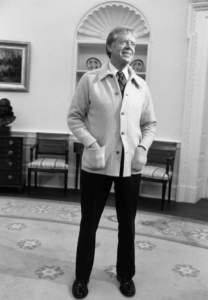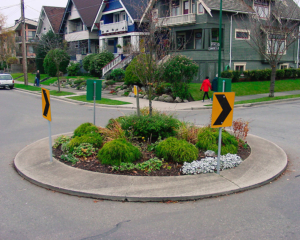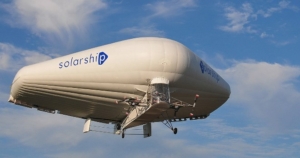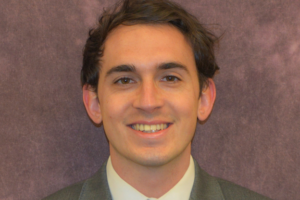Degrowth for Engineering and Engineering for Degrowth
by Kendrick Hardaway and John Mulrow
In Chicago, the great dome atop the Museum of Science and Industry rotunda is emblazoned with these words:
Science discerns the laws of nature
Industry applies them to the needs of man
The inscription’s lofty rhetoric hides a powerful assumption that is broadly internalized in industrial societies today: that the “needs of man” are unlimited, and that nearly anything humans aspire to build is permissible. With this assumption, science, industry, and our profession—engineering—are hitched to the wagon of growth. The result has been a dazzling and ever-expanding array of science and technology initiatives, amid assurances that these initiatives serve the “needs of man.”
To be sure, engineers today are accustomed to designing systems with a dual promise of meeting human needs and lowering ecological impacts. Yet rarely do such promises account for biophysical limits and the ever-expanding scope of human “needs.” Many engineers focus on product-level analyses and often miss the systems-level impacts of the products they are “improving.”
Many others mistakenly believe their research improves the prospects for building sustainable societies. For example, our 2021 analysis of 320 articles on digital technology, each with a title that implied inclusion of an environmental assessment (such as calculating a greenhouse gas footprint), found that only 115 actually had such an assessment. The rest focused on energy use or electrical configurations leading to greater efficiency, as if these constituted sustainability advances.

The SST’s “the sky’s the limit” ethos once guided tech development. (Wikimedia)
More engineering and science of the kind served up for the past many decades will not solve humanity’s sustainability challenges. Instead, engineers need to reframe the problems they address by integrating into their work the concepts of steady-state economics, including the need for degrowth at this point in history. At the same time, the degrowth/steady-state movement needs the technical rigor—the details—that engineers can offer.
Reframing Problems
A societal consensus to set limits on humanity’s impact on the planet will help usher in a new version of engineering and science. Steady-state economics can help engineers reframe the problems they address by revisiting the concept of human needs and re-examining the orientation of engineering.
While things—the stuff we use—are designed by engineers to meet people’s needs, those needs are typically assumed to be limitless. “Sustainability” programs evaluate the energy efficiency of products without acknowledging the ever-expanding definition of “need.” Consider indoor heating and cooling, where the “need” is to maintain, with minimal effort by human occupants, a consistently comfortable indoor environment; we expect to be able to wear the same business casual outfit to the office all year long in Chicago. Sociologist Elisabeth Shove questions this standard and daringly suggests a controversial pathway for technological design: “…crafting buildings and equipment that do not meet present needs, and that do not deliver equivalent levels of service, but that do enable and sustain much lower-carbon ways of life.” Could engineers design technologies that are oriented away from cultural norms of speed, comfort, and convenience?

Who would ever wear a sweater indoors? (National Archives)
It’s easy to imagine other re-conceptualizations of human needs. Do we “need” energy storage to give us energy anytime, anywhere, and in any amount? What would practical energy storage that balances “needs” with biophysical boundaries look like? Similarly, do we “need” fresh produce year-round, grown using high-input, highly industrialized agricultural processes? Might we learn to eat seasonally, relishing fruits and vegetables that arrive at our tables in their time, rather than ours?
Some engineering assumptions, like the need for speed, may also need to be rethought. Transportation engineers design roadways, railways, airways, and other transportation systems with “access” as a primary metric of concern. Access is defined by the time it takes to reach a place, and thus providing greater access means providing travelers with greater speed. Via this metric, engineers contribute to a continual ratcheting up of travel speed as part of their technological design and improvement process.
Within a world that neglects limits, forever faster proves an easy catchphrase. Speed, however, comes at an ecological (and social) cost. Often, it means more materials and more fuel in the present. More fundamentally, speed enables people to travel further, incurring an unavoidable increase in energy required to move people and things along greater and greater distances.
In a world with equitable restraints on growth, ever-greater distance is removed from the criteria by which engineers design systems. In fact, they may have to explicitly design for slower speed and lower-distance systems. Such a degrowth move would not block engineers from designing wonderfully creative transportation systems—imagine the engineering required to effectively convert car lanes to space allocated for buses, e-bikes, regular bikes, and rickshaws—but it would alter the metrics of success around which they design. Similar assumptions around cost reduction, productivity, and economic growth will be altered in the degrowth-enabled engineer imaginary.
Engineers must also embrace new approaches to their work. Most environmental impact assessment methods today focus on modeling the resource inputs and pollution outputs of technological systems. Their aim is precision of measurement. The theory is that measuring things more precisely will lead to managing them more responsibly. But if the things tested are equipment and gadgets that serve an ecologically unsustainable society, more precision will not deliver ecological responsibility. As you read this, engineers are working diligently on more fuel-efficient machines for clearing trees from the Amazon rainforest, ostensibly to expand agricultural space for feeding people. Does that effort result in greater sustainability, or less?
The metrics chosen, and the needs they serve, determine whether efforts are aimed at global sustainability or not. Consider accounting methods such as the Life Cycle Assessment (LCA). LCA is designed to provide precise supply chain information, but its conclusions do not assess the overall sustainability of a process, because global sustainability is not the static sum of product supply chain impacts. Ever more precisely defined environmental assessment methods, oriented toward individual products and bounded by corporate accounts, are not capable of engineering a decrease in our collective demand for more Earth. Sustainability standards need to apply at the global level, not just within the immediate domain of a single economic activity.
The steady-state/degrowth movement opens the possibility of re-defining “needs” and reorienting engineers to achieving equitable prosperity on our one shared planet. That’s what we mean by “degrowth for engineers.” Simultaneously, engineers need to contribute their efforts to the implementation of degrowth toward a steady state economy.
Redesigning Solutions
A key aspect of degrowth is the equitable downscaling of the human enterprise across all sectors. But few rigorous or technical studies have explored deeply the details of “a prosperous way down.” Engineers are uniquely positioned to meet this need by revising technical solutions through the lens of degrowth. The reframing of engineering problems laid out above is necessary to help engineers grapple with how to carry out an equitable downscaling. We propose four steps for “engineering degrowth.”
First, continue development of rigorous models and simulations that demonstrate the current limitations of engineering. Models are useful when they nudge us to reconsider our assumptions and imagine new ways of solving old challenges. Specifically, models can demonstrate the environmental shortcomings of silver bullet technologies in complex systems and shift focus away from narrow techno-fixes toward degrowth solutions. For example, narrowly focused transportation models of autonomous vehicles demonstrate the technology’s potential to reduce greenhouse gas emissions with more efficient driving, car-sharing capabilities, and fewer accidents (among many other claims). But, when designed with a broad focus, models are instead showing that autonomous vehicles would potentially exacerbate sprawl, induce much more travel demand, and generally increase greenhouse gas emissions.
These models can also usher in a new way of conceiving metrics and measurements of success. Even now, engineers use models to show the limitations of old metrics that miss part of the whole picture (such as measuring only greenhouse gas emissions) and push toward cutting-edge ways of evaluating technology, its use, and its place within the socio-ecological sphere. Our own work can provide some initial thinking. Without sufficient critique of the existing system, we cannot move to the next steps.
Second, apply new measures of success to technical analyses. That will help us answer questions like, “How do we downscale? How do we slow down?” Speed, efficiency, and cost-benefit analysis should not be the most important metrics in engineering design. Instead, engineers must devote attention to determining useful and holistic ways of measuring environmental impact, as seen, for example, in Andrea Vetter’s Matrix of Convivial Technology, or by advancing concepts like emergy and exergy, which help us to conceptualize energy differently. Rather than prioritizing a financial return on investment, a new metric may evaluate the use- and regeneration-rates of emergy for a project.
Another important source of new metrics is from ecological system principles and governance of the commons. Simultaneously, rather than design humans out of processes and prioritize profit, engineers guided by degrowth will place humans at the center of the design process. This requires new teaching and new project bidding mechanisms that give engineers space to design with new metrics.

Brilliant engineering can be deceptively simple, and highly aesthetic. (Wikimedia)
Third, shift focus from innovation of new technologies (though this will still be necessary) toward innovation in maintaining, repurposing, or even rediscovering existing technologies. An equitable downscaling will primarily come from engineers who develop new ways to use existing transportation technologies, maintain existing infrastructure with fewer resources, and relearn passive building design, to name a few examples.
Ivan Illich suggests that professionals (i.e., engineers) in the richest countries learn some of these practices from professionals in other parts of the world, reversing the traditional exchange of knowledge. A remobilization of engineering effort could help. Engineers could, for example, end their work on planned and perceived obsolescence.
Fourth, bridge the technical gap between required innovation and existing technologies. This involves the continued development of renewable energy, but also innovations in low-impact design for agriculture, building, manufacturing, and system analysis. This work must harmonize with politically established goals and limits so that new innovations are not hijacked to expand resource exploitation, and power disparities. Innovation will involve remanufacture, repair, redesign, promotion of usership over ownership, and elimination of planned obsolescence. It will involve identifying which technologies and systems need transitioning (e.g., internal combustion engine vehicles to electric vehicles) and which will need transforming (e.g., car-oriented communities to active transit communities). This requires engineers to become more involved with political decision-making and communication.
A New Motto
The inscription on the Museum of Science and Industry rotunda is a re-phrasing of the theme of Chicago’s “Century of Progress” World’s Fair in 1933: Science Finds, Industry Applies, Man Conforms. The museum was born amid the Dust Bowl and the Great Depression, and the thinking espoused in the inscription does not fit modern realities. Instead, Don Norman has suggested an alternative philosophy to serve today’s societies: People Propose, Science Studies, Technology Conforms.

Engineers: Will a solar-helium blimp fit within a degrowth or steady-state future? (Wikimedia)
As the world downscales, engineers will be asked to manage and shape technology to function effectively and sustainably within the rapidly evolving world. In fact, engineers will likely be valuable in determining which technologies societies should actively limit and reject, making engineers pivotal actors. This powerful positioning implies a heavy responsibility. It requires that engineers transition to a new understanding of their critical work and a new way of building the world.
Kendrick Hardaway is a Ph.D. candidate in engineering at Purdue University.

John Mulrow is a Visiting Assistant Professor of engineering at Purdue University.





Excellent to have this perspective on degrowth! You are absolutely right that engineering – properly re-oriented – will play a crucial role in the transition to an economy in harmony with nature.
Undoing past, improperly oriented feats of engineering will also play an important role: see https://steadystate.org/dont-fence-me-in-exnovation-for-degrowth
Excellent article. Frankly I think the novelty of thinking about engineering optimization goals in new ways would be fascinating for engineers (how could it not be, engineers like to solve problems). I hope we’ll see this soon.
One could even work this into engineering via a “back door” approach that would appeal to those enamored with endless growth. Assuming humanity wants to grow and expand endlessly to other planets, and other solar systems, then we’ll build space ships for the long voyage, right? How long will those journeys last? Oh, hundreds or thousands of years, actually! What to do? Well, those colonizing spaceships will need to support their human communities for many generations, with finite resources and limits you can literally reach out and touch, knocking on the hull.
Ergo, to realize that (crazy) growth into other worlds dream viable, we’ll need to engineer solutions that are sustainable for hundreds of years, minimum. At which point, one could implement all that right where it’s actually needed, on Earth.
Excellent article! Looking forward to finding the time to follow up on some of your links. As a retired software engineer, I immediately see the utility of your ideas.
Next, how do we work these ideas into engineering curricula, and how do we influence employers to adopt these criteria?
Thanks for the article which highlights some of the many engineering projects that budding changemakers are itching to get started on.
The planet is indeed in dire need of being re-engineered for sustainability.
This critical message is, for the most part sadly drowned out by all of the consumerist messaging widespread across all media.
An engineering solution that might help is the addition of a whatsapp share button on the Heralds publications.
These valuable articles may then become shared, read, and shared on again, with more readers becoming aware of the steady state alternative.